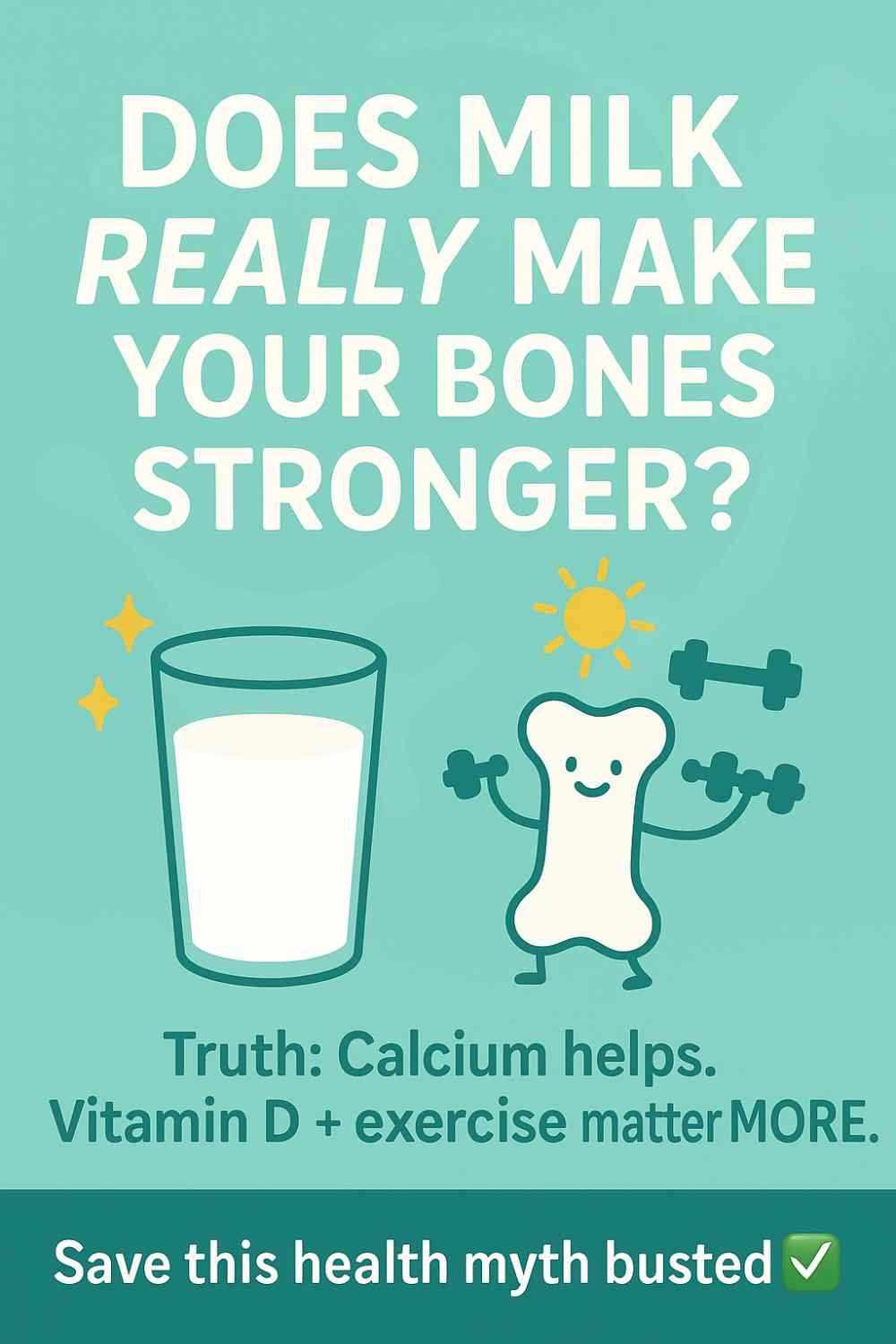 For generations, milk has been shoved down our throats—sometimes literally—as the ultimate bone-building elixir. Got milk? More like, got marketing. But here’s the thing: does chugging gallons of the stuff actually make your bones unbreakable, or is this just another nutritional myth we’ve swallowed without question?
For generations, milk has been shoved down our throats—sometimes literally—as the ultimate bone-building elixir. Got milk? More like, got marketing. But here’s the thing: does chugging gallons of the stuff actually make your bones unbreakable, or is this just another nutritional myth we’ve swallowed without question?
Let’s crack this open. Milk is packed with calcium, no argument there. Your bones love calcium. But here’s where it gets messy. Bones aren’t just calcium depositories; they’re living, dynamic tissues that need way more than a single nutrient to stay strong. If milk were the magic bullet, why do osteoporosis rates still climb in countries where dairy is a dietary staple?
The Calcium Obsession (And Why It’s Not Enough)
We’ve been conditioned to think of bones like piggy banks—dump in calcium, and voilà, unbreakable savings. Reality check: bones are more like a construction site. Calcium is the bricks, but you also need workers (vitamin D), cement (magnesium, vitamin K), and a foreman (exercise) to build anything sturdy.
Ever heard of the “calcium paradox”? Countries like India and Peru, where dairy consumption is low, often have lower fracture rates than the U.S. or Sweden, where milk flows like water. What gives? It’s not just about calcium intake—it’s about absorption, lifestyle, and what else you’re eating (or not eating).
The Milk Myth: What Science Actually Says
Here’s where the plot thickens. Some studies show dairy might help bone density—especially in kids and teens. But others? Zilch. A massive Harvard study tracking over 72,000 women for two decades found no evidence that drinking more milk reduced fracture risk. In fact, high dairy intake was linked to higher fracture rates in some cases. Oof.
And let’s talk absorption. Only about 30% of the calcium in milk gets absorbed by your body. Compare that to kale (50%) or bok choy (a whopping 60%). Suddenly, Popeye’s spinach obsession makes sense.
The Exercise Factor (Or Why Your Couch Is the Real Villain)
You could drink milk by the bathtub, but if you’re sedentary, your bones won’t care. Bones thrive on stress—the good kind. Weight-bearing exercise (running, lifting, even brisk walking) signals your body to fortify bone density. No workout? Your skeleton basically shrugs and says, “Why bother?”
Think of it this way: milk might hand your bones the materials, but exercise is the contractor yelling, “Use them!”
The Dairy Dilemma: Not Everyone’s Built for It
Lactose intolerance isn’t some rare glitch—it’s the norm for about 65% of the global population. If your gut revolts at milk, forcing it down for “strong bones” is like using a sledgehammer to crack a walnut. Painful and pointless.
And let’s not ignore the inflammation debate. Some research suggests dairy might trigger low-grade inflammation in certain people, which hurts bone health over time. Not exactly the strong-bone narrative we were sold.
Better Ways to Build Bones (That Don’t Involve a Cow)
If milk’s not the hero we thought, what actually works? Glad you asked.
🌱 Leafy greens: Spinach, collards, and kale pack calcium, magnesium, and vitamin K—a bone-building trifecta.
🥜 Nuts and seeds: Almonds, chia, and sesame seeds deliver calcium without the lactose drama.
🐟 Fatty fish: Salmon and sardines? Loaded with vitamin D, the calcium sidekick.
🏋️ Lift heavy things: Your bones adapt to stress. No stress? They slack off.
The Bottom Line: Milk’s Not a Miracle
Milk can be part of a bone-friendly diet, but it’s not the lone savior. If you love it, great. If you hate it? No sweat. Strong bones come from a mix of nutrients, movement, and avoiding bone-wrecking habits (looking at you, soda and all-nighters).
So next time someone insists milk is non-negotiable for strong bones, smile and hand them a kale smoothie. Or better yet, a dumbbell.

